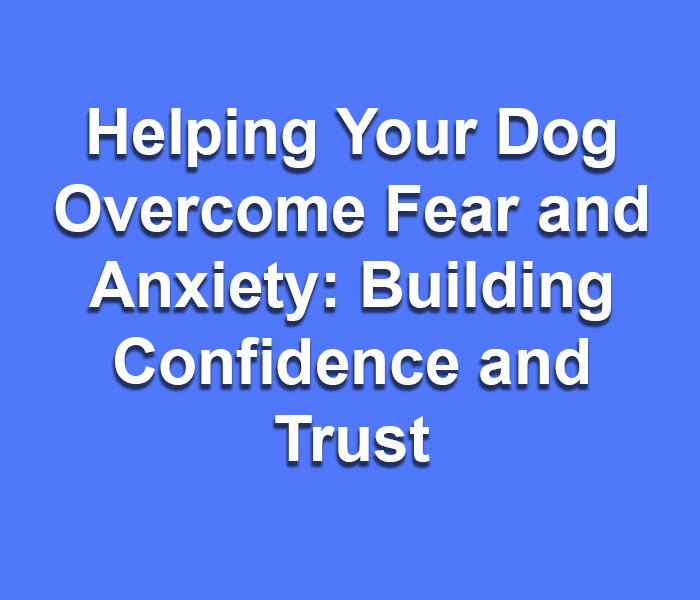Introduction:
Fear and anxiety can greatly impact a dog’s quality of life, making them feel stressed, insecure and unable to enjoy everyday experiences. As a dog owner, it is important to support your furry friend and help them overcome these challenges. In this blog post, we will explore effective strategies and techniques for building your dog’s confidence, promoting trust and alleviating fear and anxiety.
Recognizing Fear and Anxiety Signs:
- Understanding common signs: Learn to recognize signs of fear and anxiety in your dog, such as trembling, panting, excessive drooling, hiding, pacing or destructive behavior. Being aware of these signals will help you address their needs promptly.
- Identify triggers: Observe and identify specific situations, objects or events that trigger fear and anxiety in your dog. This will enable you to develop a targeted approach to address their specific concerns.
Create a Safe and Supportive Environment:
- Provide a safe space: Create a designated safe area or den where your dog can retreat to when they feel anxious or overwhelmed. Make this space comfortable, with their bed, toys and familiar scents.
- Minimize exposure to triggers: Gradually expose your dog to their triggers in a controlled manner. Start with minimal exposure and gradually increase the intensity or duration as they become more comfortable.
Positive Reinforcement Training:
- Counter-conditioning: Pair positive experiences and rewards with situations that trigger fear or anxiety. For example, if your dog is scared of thunderstorms, associate the sound of thunder with treats, play or calming activities.
- Desensitization: Gradually introduce your dog to fear-inducing stimuli at a distance or at a low intensity. Over time, increase exposure in a controlled manner while rewarding calm behavior.
Engage in Confidence-Building Activities:
- Basic obedience training: Enroll your dog in positive reinforcement-based training classes to build their confidence and strengthen your bond. Training provides mental stimulation and helps them develop skills to navigate different situations.
- Interactive games and puzzles: Engage your dog in interactive games and puzzles that challenge their problem-solving abilities. This helps boost their confidence and redirects their focus away from anxious thoughts.
Seek Professional Support:
- Consult a veterinarian or behaviorist: If your dog’s fear and anxiety persist or worsen despite your efforts, consult with a veterinarian or professional dog behaviorist. They can provide personalized guidance, recommend behavior modification techniques or explore potential medication options if necessary.
Conclusion: Helping your dog overcome fear and anxiety requires patience, understanding and consistent effort. By recognizing signs of fear and anxiety, creating a safe environment, implementing positive reinforcement training, engaging in confidence-building activities and seeking professional support when needed, you can make a significant difference in your dog’s well-being. Remember, building confidence and trust takes time, so be patient with your furry friend and celebrate each small step forward. Together, you can help your dog lead a happier, more confident and anxiety-free life.

